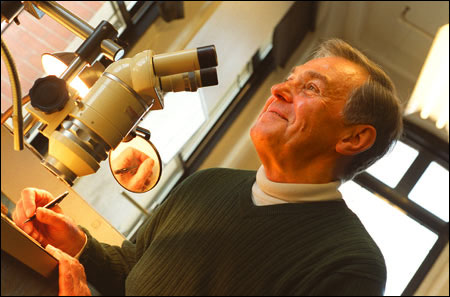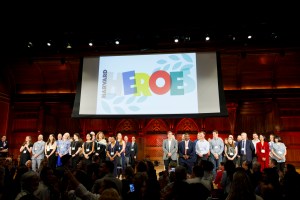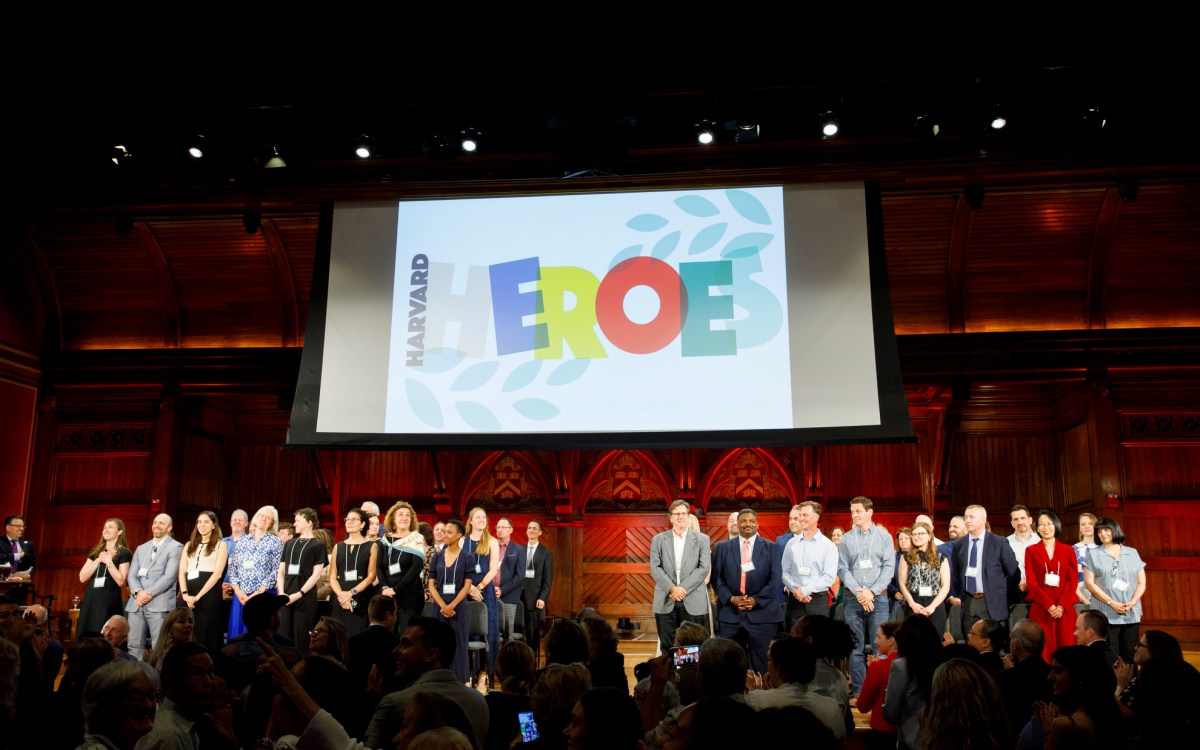The Big Picture:
Laszlo Meszoly: Scientific illustrator

The realm where science blends into art lies in a back room of the Museum of Comparative Zoology, on a small sheet of paper under Laszlo Meszoly’s hand.
Meszoly is a scientific illustrator who calls both the microscope and the sketch pad his tools. Rather than an artist’s usual subjects of landscapes or flowers or boats or babies, Meszoly draws bones and organs and long-extinct animals.
Though an independent contractor for the University, Meszoly has been a fixture here for years, starting in 1967, when Ernst Mayer was still director of the Museum of Comparative Zoology.
Since then, Meszoly has drawn hundreds of images, including lizards, dinosaur fossils, insects, mammals, fish, and a bewildering array of their component body parts, all anatomically correct, of course.
Though Meszoly does the drawing himself, the work is a team effort. The scientist or scientists involved give him the initial information, including specimens to examine, and provide input at different stages. They suggest adjustment and enhancements until the image becomes a resource, documenting its subject as much as describing it.
“It’s really a cooperative effort,” Meszoly said.
Though the science is sometimes rigorous, Meszoly said he finds both beauty and adventure in his work. He starts with individual bones or limbs and then puts them together (literally or in his mind’s eye) until creatures that have been extinct for millennia emerge whole again from his pencil.
“First you illustrate the bones,” Meszoly said, “then you create the animal. You look at things nobody has ever seen before.”
Meszoly, who grew up in a nature-loving family in Hungary before emigrating to the United States in 1952, studied at the Massachusetts College of Art. He thought he’d become a painter, he hoped a famous one. After years of working various jobs to support his art habit, however, he began to gather tips from a scientific illustrator working with his brother, then a graduate student in biology at Boston University.
He learned to work in black and white and perfected the technique of stippling, which uses hundreds of tiny dots to add depth. His technical mastery has been noticed. His work has been in hundreds of publications, from scientific articles to a recent book on Massachusetts’ fish to the covers of Science and Nature magazines. Though it’s all science, to Meszoly, it’s also all art.
“The drawings end up being attractive,” he said, “Everything you draw, if you look closely enough, has a certain innate beauty.”
We serve the public interest! Interesting people, interesting jobs, interesting hobbies – we want them in the Big Picture. If you have an idea for the Big Picture, give us a buzz at big_picture@harvard.edu




